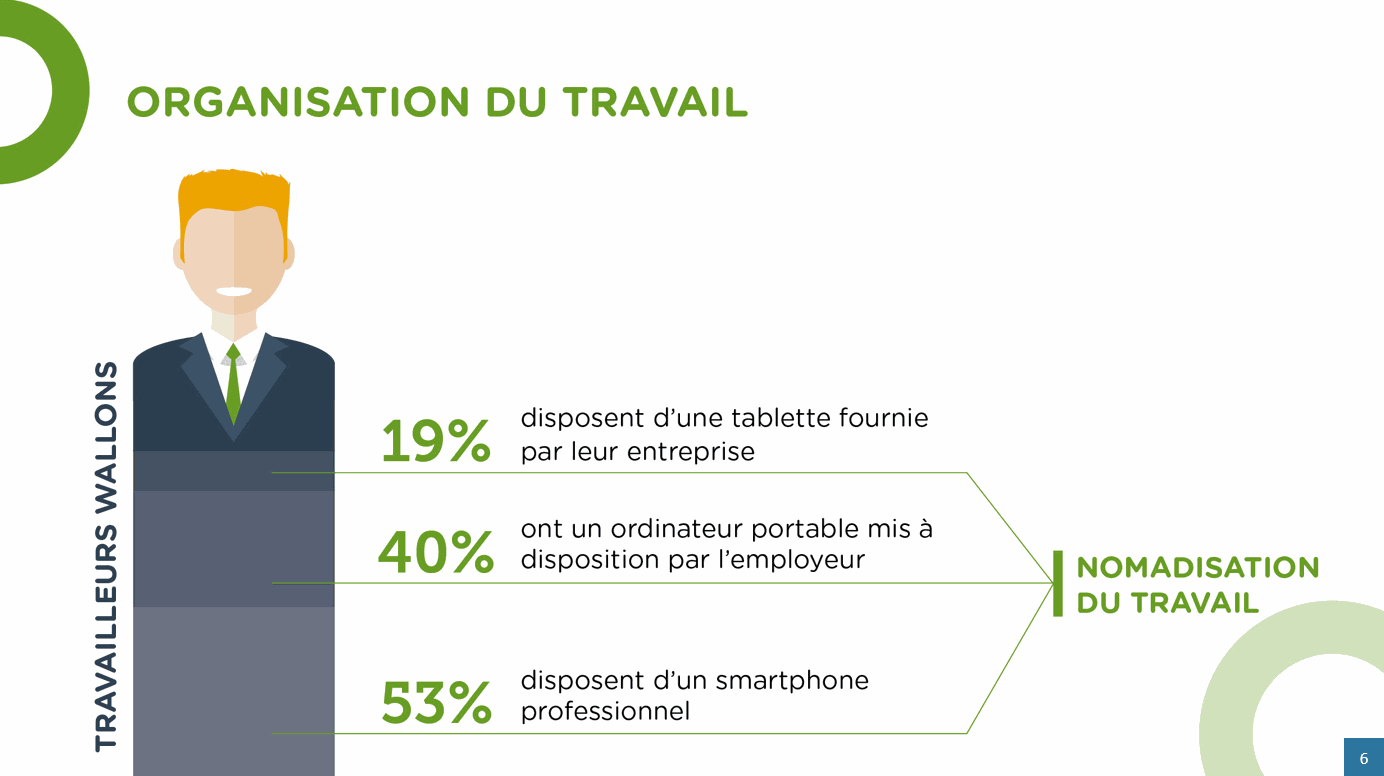In this time of crisis, it is imperative to allow your workers to work from home, but is your company equipped for this situation?
For many years now, digitalization has arrived in our companies, allowing everyone to work from anywhere at any time.
In the Walloon Region, the authorities have been trying for several months to boost this trend by putting in place significant aid for businesses, such as the "chèques entreprises".
But what is the reality in your company? What are the challenges, tools and even risks of teleworking? So many important points to take into account when implementing this solution for your employees.

Which digital solutions?
In teleworking, it is essential to have collaborative tools. We can take the Google suite as an example: GSuite, but there are others. In this suite we find messaging tools (email) but also chat, phone calls, video conferencing and screen sharing.
To this suite are added the "classic" office automation tools; word processing, spreadsheet, presentation, etc... but in collaborative mode as well and perfectly integrated with the rest. That's allow you to work like if you were in front of your desk at the office, working at the same time together on a same document., while seeing you and talking to you. On 2, on 3... on 10 or even more if you wish.
Next to that, you have the "ERP" tools, which today are more often a suite of integrated applications, which play the same role but in a much more modern, flexible and intuitive way than in the past. We can also mention Odoo, even if other solutions do exist.
Once again, we find the full web aspect of the tool, which will allow access from anywhere without any local installation. Everything is in the cloud, which will also allow for seamless availability and cost reduction. And finally in a single tool, you will find, even remotely, all the information of your company: estimates, orders, invoices, etc... but also all the HR aspects; who works when and what, who is present and who is absent, the evolution of tasks, projects, deliveries, dashboards in real time to follow the evolution of the situation.
Production management, and the corresponding stocks. Relationships with your customers and suppliers. Or even continue to organize events and training courses, but also remotely.
In short, it is unfortunately in these difficult and exceptional times that one realises the usefulness of this type of tool, which in this case enabled all companies that were equipped to switch from traditional work to telework overnight without impact on their teams.
Report
In addition, even though many remote access solutions exist, many companies still use cumbersome management solutions, installed locally on the PC desktop, making it difficult and sometimes impossible for employees to work remotely.
Access to the DMS (document management system) and other file managers is sometimes impossible, so employees have to send more emails, save in locacles,...
Finally, the new communication and collaboration tools are often little used in our companies, for example: VOIP, video conferencing solutions, collaborative work on documents,...


Issues
The various benefits of teleworking are known to all, flexibility, time saving in transportation,, ... but behind these advantages, many issues await your company and your employees at the level of work organization.
For example, let's list the following assumptions for employees:
Can I access the entire informations and important documents from home?
The tools that I use on a daily base are available remotely?
Collaborative work is possible while working remotely?
How good is my Internet connection ?
...
For the leaders, the stakes will be to measure the worker's productivity, to make sure that the tasks are carried out while ensuring the computer security of the tools used?
The figures opposite show that many companies are not, or only slightly, digitally ready, so it is imperative to ensure that the above assumptions are validated to ensure optimal profitability for telework.
Tools
As you will have understood, telework is an ideal solution for all workers, but it is important for the company to equip itself with the right tools. We will list below the different tools that are useful to ensure an optimized telework:
Management Software (ERP, CRM) allowing the management of tasks, scores or even the management of his company via reports and indicative dashboard.
DMS - Document Management System for remote access to company documents
VOIP Telephony et collaboration tools (video conférence)
Business software in web version allowing remote access
Hardware (Desktop, Laptop,...) available for your team members


Security and RGPD
Finally, it is imperative to take into account the IT security of your tools and the respect of RGPD standards when setting up remote work for your employees. Indeed, attacks and data hacking affect two out of three companies in Belgium.
It will therefore be essential to ensure the quality of the security put in place for the tools made available to your employees.
EIn conclusion, and in this time of crisis, it will be important to allow your employees to work remotely. This will also allow your company to continue to provide a service for your customers and partners.
But the choice of tools and arrangements to be put in place will be important.